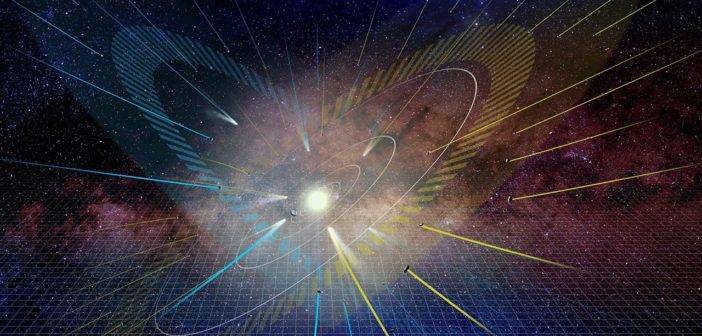Editor’s note: In these last two weeks of 2020, we’ll be looking at a few selections that we haven’t yet discussed on AAS Nova from among the most-downloaded papers published in AAS journals this year. The usual posting schedule will resume in January.
Anisotropy of Long-period Comets Explained by Their Formation Process
Published August 2020
Main takeaway:
New modeling by Arika Higuchi (University of Occupational and Environmental Health, Japan) suggests that there is more than one plane of alignment for our solar system. In addition to the ecliptic plane, which is tilted at ~60° relative to the Milky Way’s plane and within which the planets and many minor bodies reside, there exists a second alignment plane — the “empty ecliptic” — tilted at ~60° in the other direction relative to the galactic plane.
Why it’s interesting:
Long-period comets — comets that take tens of thousands of years to orbit — often have orbits that are not aligned with the ecliptic plane. Their orbits can’t be explained by simple scattering off of other solar system bodies, because even their aphelia — the points in their orbits farthest from the Sun — don’t lie near the ecliptic. The second alignment plane proposed by Higuchi could explain the orbits of these observed comets and solve the puzzle of how our solar system evolved into its current structure.What’s causing this second plane:
The orbits of solar system bodies are initially determined by the angular momentum of the young solar nebula from which they formed, and the orbits are later shaped by the local gravitational forces of the Sun and larger solar system bodies as objects interact. But there’s an additional factor at play: the small but still significant gravitational influence of the Milky Way galaxy in which our solar system resides. Higuchi shows that when we take into account all of these forces, two fundamental alignment planes arise in the solar system: the well-known ecliptic, where most bodies likely form, and the empty ecliptic, which some comets scatter into over time.
Citation
Arika Higuchi 2020 AJ 160 134. doi:10.3847/1538-3881/aba94d

